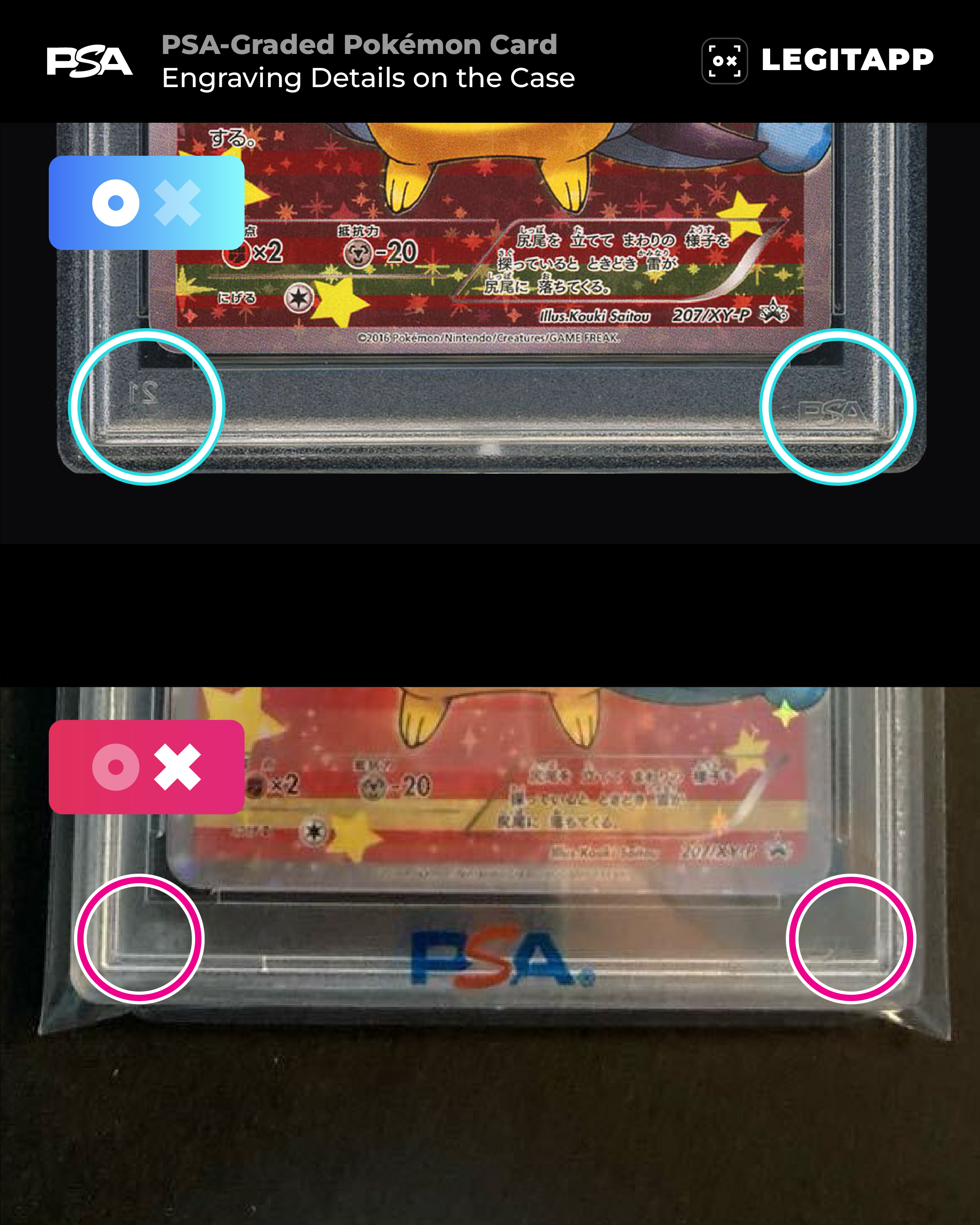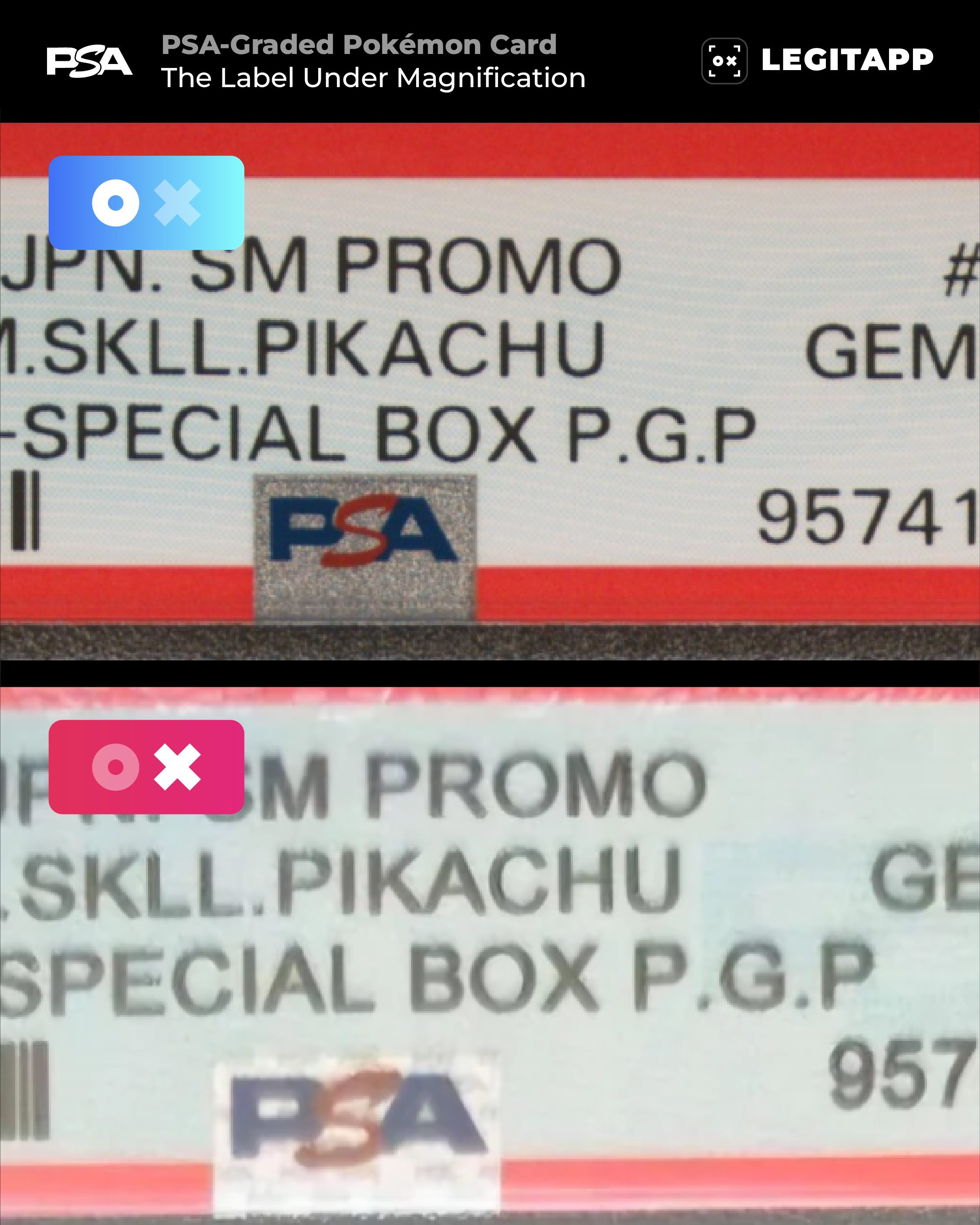Real vs Replica
Real vs Fake: How to Authenticate a PSA-Graded Pokémon Card

When it comes to graded Pokémon cards, PSA cases are trusted for their consistency and security. Unfortunately, counterfeit PSA holders are becoming increasingly convincing, and knowing how to differentiate a real case from a fake one is essential for collectors. Below are a few important points to review when assessing a PSA case.
Spotting Counterfeit PSA Grading Cases
1. UV (Black) Light Test

Authentic: Hidden “PSA” text appears in two fixed spots, glowing evenly under UV light.
Replica: The glow may be patchy, overly intense, or positioned incorrectly, making it stand out from a genuine case.
2. Engraving Details on the Case

Authentic: Has a cleanly engraved “PSA” logo at the bottom-right and the number “21” at the bottom-left, both sharp and consistent.
Replica: May lack one or both engravings, or show shallow, uneven etching. The “21” is often replaced or missing.
3. Inspecting the Label Under Magnification

Authentic: Under magnification, the background shows fine, uniform light-blue dots. A faint “PSA” watermark appears when photocopied.
Replica: Dots are blotchy or irregular, and the “PSA” watermark is bold and intrusive. Fonts or alignment may also be off.
Quick Reference Checklist for PSA Card Authentication
1. Evenly glowing hidden “PSA” text in two exact spots under UV light
2. Crisp engravings: “PSA” logo (bottom-right) and “21” (bottom-left)
3. Consistent light-blue dots on label; faint watermark when copied
Not Confident? Let LegitApp Check Your PSA Card’s Authenticity
Some counterfeit PSA cases are highly convincing. For complete confidence, submit clear photos of your PSA-graded Pokémon card case to LegitApp. Our team of expert authenticators, backed by advanced AI analysis, will examine every detail and issue a digital Certificate of Authenticity you can keep or share.
Download LegitApp: iOS or Android
More Valuable Insights: https://legitapp.com/blog


 Karty kolekcjonerskie
Karty kolekcjonerskie Pokémon
Pokémon Graded Singles
Graded Singles